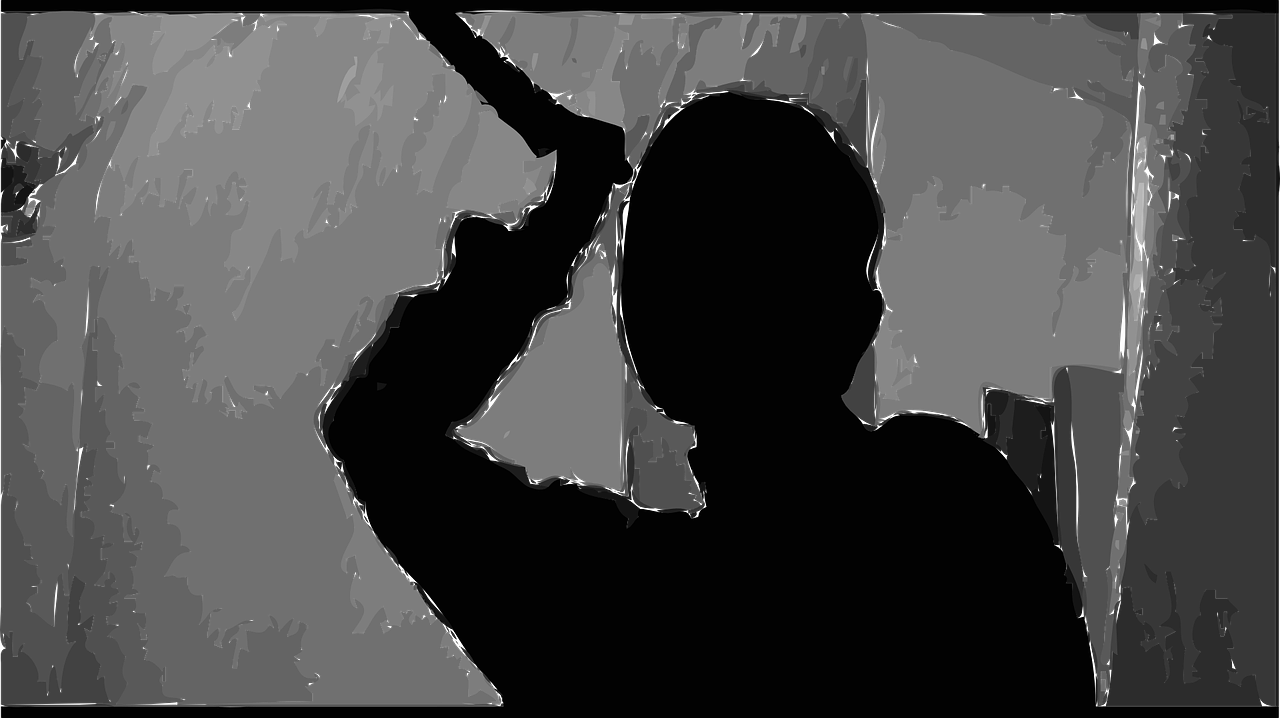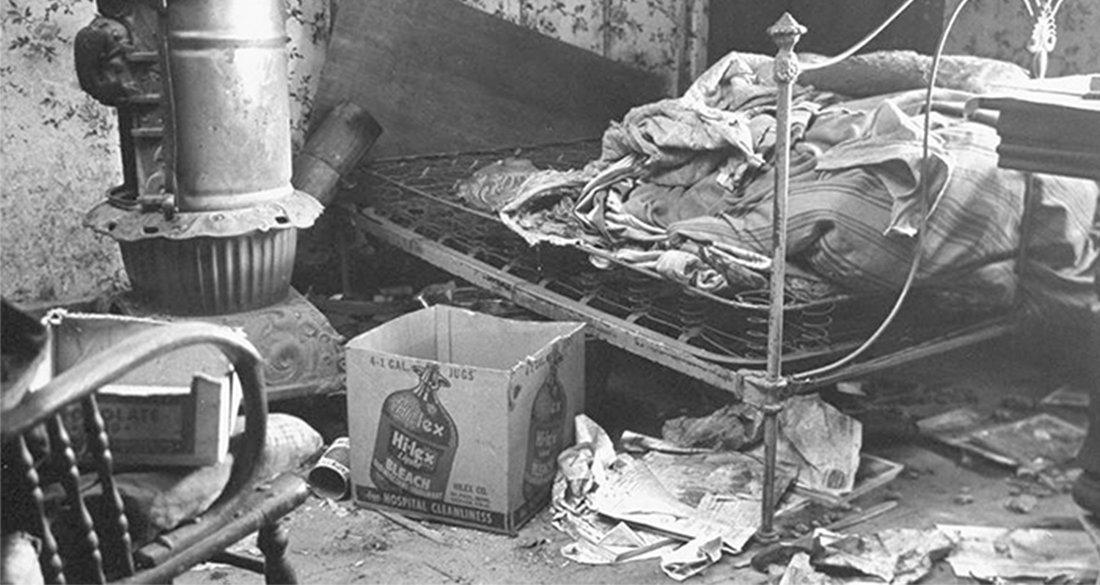The psychopath is a recurring archetype in the history of film. But how have these characters evolved along with our perceptions of mental health? And what can they teach us? By evaluating realistic psychopathic characters in film – as well as the not-so-realistic ones – we can come to appreciate how modern culture is shaped by our frequently limited understanding of mental health.
◊
The human mind can be a scary place. And we’ve always been fascinated by it.
Throughout human history, it seems, we have been curious about the macabre and intrigued by the unknown – traits of human nature that have fueled our imaginations, our art, and our discoveries. Among the mysteries that captivate us are the human mind and, specifically, psychological disorders.
Perhaps that is why our art emulates this. The psychopathic villain is a character who appears in our films time and time again. The archetype takes on many kinds of roles: the chillingly cool and sociopathic businessman, the sinister killer, the quiet one with a dark secret.
Some are portrayed realistically, while others … not so much.
Watch Psychopath: Redefining Rational on MagellanTV!
Are Psychopathic Characters in Movies Realistic?
Which cinematic psychopaths are most believable? Well, there’s a study for that. In 2014, Belgian psychiatrist Samuel Leistedt and his team sat down to watch 400 international movies – an investigation that spanned the course of three years. The films dated from 1915 to 2010 and ranged extensively in genre (from comedies to war films, and everything in between). Leistedt and his colleagues analyzed each of the films, excluding any person or being who was invincible, had magical powers, were nonhuman, or set in a nonrealistic context. (This is science, after all, and they were going for accuracy, not creativity on this one.)
After all was said and done, 126 nefarious characters were left standing; all of whom the researchers considered to be psychopathic. The fictional psychopaths ranged from villainous banker Henry F. Potter in It’s a Wonderful Life (1946) to the ruthless Alex DeLarge in A Clockwork Orange (1971).

Norman Bates interrupts Marion Crane's shower in Psycho. (Image Credit: Needpix.com)
During the study, Leistedt evaluated many well-known and widely-considered psychopathic characters, though he suggested some of them aren’t psychopaths after all. Norman Bates in Psycho (1960) is one of the most infamous “psychos” in movie history, but he is diagnosed by Leistedt as psychotic, not psychopathic.
Prisons are full of psychopathic inmates. In film, the criminal or antisocial psychopath is likely the most common type of psychopath. Characters like Michael Corleone in The Godfather (1972) and Frank Booth in Blue Velvet (1986) fit the bill.
Of all the characters studied, Leistedt considered Anton Chigurh from the Coen Brothers’ No Country for Old Men (2007) to be the most realistic cinematic psychopath. If you’ve seen the film, it’s hard to argue with this conclusion. Chigurh, played by Javier Bardem, is a hitman who embodies all of the “typical” traits of a psychopath – a complete lack of conscience, remorse, and compassion – and decides the fate of many with the flip of a coin. The study also names Hans Beckert in M (1931) and Henry Lee Lucas in Henry: Portrait of a Serial Killer (1986) as honorable mentions for their complex and convincing portrayals of the ill-minded.
Learn more about real psychopaths and criminals with MagellanTV Documentaries! Because real is worth watching.
The Transformation of the Psychopath
At the finale of their cinematic journey, Leistedt and his team determined, perhaps unsurprisingly, that early representations of psychopaths weren’t very accurate at all. This inaccuracy reflected the public’s overall unfamiliarity with mental illness at the time. Unfortunately, the lack of realism became a bit of a vicious cycle: Films reflected the public’s ignorance, which led people to perceive the depictions as true, resulting in even more mental health misconceptions.
These misconceptions include supposed psychopathic traits that filmmakers relied upon the audiences recognizing. "[Psychopaths] were often caricatured as sadistic, unpredictable, sexually depraved, and emotionally unstable with a compulsion to engage in random violence, murders, and destruction," Leistedt’s study points out, "usually presenting with a series of bizarre mannerisms, such as giggling, laughing, or facial tics, often creating famous and unreal characters." Reality, though, is more complicated, and these traits are not hallmarks of psychopathy.
To learn more about psychopaths in the real world, check out MagellanTV's enlightening documentary Psychopaths: Redefining Rational.
The psychopathic character template (however inaccurate) remained pretty much the same until the late 1950s, when horrific events began to shift our cultural perceptions on psychopaths. For example, in 1957, authorities arrested serial killer Ed Gein, aka the “Butcher of Plainfield.” Gein was a handyman from Wisconsin who became infamous for being a murderer and grave robber, and, most chillingly, for wearing a mask made of human skin and fixing-up his home with human body parts.
Before the Gein case, the average person didn’t open their newspaper to find stories about a belt crafted from nipples, a wastebasket constructed out of skin, or bowls made from human skulls (please, don’t Google it). The grisly scene Gein left in his home for authorities to find would, to this day, make you squeamish and shudder. So it’s no surprise his sincerely disturbing case was one that inspired storytellers and attracted attention, albeit from glances through covered eyes.

Ed Gein's home was quite a mess. (Image Credit: allthatsinteresting.com)
After Gein’s case, the cinematic portrayal of psychopaths was almost exclusively reserved to the horror genre, having shifted from the evil-genius mobster to the scary-movie killer. And widely reported strories about real-life psychopaths, along with the increased focus on serial killers who came to light from the late 1960s to the ’80s, brought greater public knowledge of psychopathic behavior, specifically the ritualistic methods of murder. From this trend, the slasher film was born.
Leatherface, the skin-clad psycho-killer who debuted in the 1974 film Texas Chainsaw Massacre, was inspired by Ed Gein. Other famous characters, like Norman Bates from Psycho and Buffalo Bill from The Silence of the Lambs (1991), are also thought to have been inspired by the real-life killer.
But while the public got a new type of psychopathic character, that didn’t mean they got a realistic one. Leistedt explores this in his study, noting, “motion pictures began to incorporate the graphic and widely misunderstood practices of these behaviors into sensationalistic film themes.” Nevertheless, slasher films persisted, perhaps due to the marketability of iconic villains (think 1978’s Halloween and 1980’s Friday the 13th).
But the psychopathic archetype was not done evolving, and an increasing interest in the realistic depiction of these characters brought on a new character template: first, the high-functioning, “elite psychopath” who exhibited exaggerated levels of intelligence, manners, and cunning (Dr. Hannibal Lecter of Silence of the Lambs); and later, the more human, non-maniacal, and vulnerable psychopath who became popular starting in the early 2000s (for example, the character Josef in the Creep series), which catches us up to the cinematic psychopaths of today.
What Can We Learn from the Ways Psychopaths are Portrayed in Film?
Why do so many psychopaths, realistic or not, wind up on our screens? There’s an obvious cultural obsession with psychopaths, perhaps fueled by our historical lack of knowledge on the complex personality disorder. But, for psychologist Martin Hesse, the phenomenon may be explained by our fascination with what he refers to as “the narrative of the human monster.”
“The human monster narrative contributes to the fascination of psychopathy. Some very disturbed individuals commit spectacular crimes. They have the ability to appear completely normal, yet are capable of the most shockingly deviant behaviours.” – Martin Hesse, “Portrayal of psychopathy in the movies” (2009)
Hesse describes our fascination as more interested in a single evil than a multitude of comparatively mundane problems. He writes, “recounting the drug problems in a city as the result of a single, evil gangster … is more interesting than considering the many factors that can be involved in a city’s drug problem.” This idea of the human monster seems to explain the popularity of the psychopathic character in film – and it also shows us something we can learn about ourselves.
But that’s not the only thing we can find out from evaluating psychopaths in film. By observing the types of characters portrayed in cinema, we can also make observations on social and cultural norms in relation to gender, both on and off the screen.
Let’s take a look back at Leistedt’s research. The study chose 126 fictional psychopathic characters based on their realism and clinical accuracy, ignoring any commercial success or other associated appeal. Of the characters, 105 were male and 21 were female – an interesting imbalance, but one in which life and art appear to line up. Historically, in reality, more men are diagnosed with psychopathy than women, though that doesn’t necessarily mean fewer women are affected by the disorder. However, gender biases may have affected diagnoses and treatments, and may continue to do so.
The Continuing Evolution of the Psychopath in Film
While film can help spread awareness of mental illness to the general public, stereotypical or unrealistic depictions of disorders in these movies can perpetuate harmful or stigmatizing ideas. Like many other things in life, it is best to pair information gained from films with your own fact checking – an effective way to filter out some of these biases.
The cinematic psychopath is likely to evolve and shift along with our perceptions and understanding of the human mind. Even with so many discoveries having been made, there is still so much left to understand. Perhaps this is why psychopaths are still, and probably always will be, so fascinating to us.

